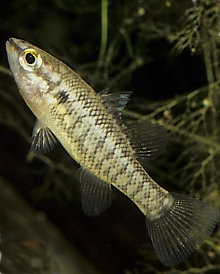Dry times leaving river fish more limited
 Fish migrations will be interrupted by the drying climate near Australia’s coast, according to a new paper from Murdoch University.
Fish migrations will be interrupted by the drying climate near Australia’s coast, according to a new paper from Murdoch University.
Researchers from the Western Australian university say fish populations are under increasing pressure, with the new paper showing a clear relationship between river flow and the spawning migrations of fish that live within them.
“Australia’s south west has seen major reductions in rainfall since the 1970s, leading to a decline in surface flow of around 50 per cent,” said lead author Dr Stephen Beatty.
“The ongoing flow reductions will result in these fish species migrating less and cause a loss of suitable spawning habitat. As a result, declines in their abundances can be expected.”
Data was gathered for the study over four years, wherein researchers probed the the Blackwood River to track the migrations of the Western Pygmy Perch, Balston’s Pygmy Perch, Western Minnow and the Nightfish. The team then assessed the links between river fish migrations and the environmental variations.
“The amount of surface discharge was the best predictor of the strength of the annual spawning migrations of most species,” Dr Beatty said.
“With surface flows projected to continue to diminish in this region, our findings have major consequences for the future of these fish species.”
Large river-dwelling fish play a major role in the ecosystem. They feed on the larvae of many hard-to-control pests and bugs, keeping numbers down. The big fish are often forced to seek refuge in pools of water during particularly dry times, but researchers say increasing aridity means these pools will be fewer and further between.
“Every effort should be made to ensure that existing stressors are addressed and that abstractions of surface and groundwater consider the sensitivity of fishes to changes in hydrology,” Dr Beatty added.
More details will appear in the next edition of the journal Global Change Biology, accessible here.








 Print
Print